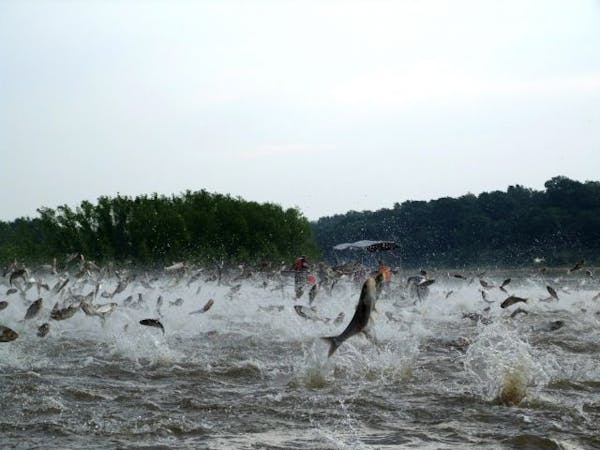The bad news continues for Minnesota's moose.
The population of the iconic animal in northeastern Minnesota has declined again, based on the latest aerial survey this winter by the Department of Natural Resources.
Wildlife researchers estimate that there are 5,500 moose in that region of the state. With a 23 percent margin of error, the estimate is not statistically different from last year's estimate of 7,600, but it supports other evidence that the moose population is declining.
"We don't believe the population dropped 2,000 in the past year, but it's indicative that the population is declining and parallels everything else we've been seeing," said Mark Lenarz, DNR wildlife researcher. "Our concern continues."
Reasons for the decline are uncertain, but researchers continue to believe a warming climate is responsible. Minnesota, already at the southern fringe of the moose range, apparently is becoming inhospitable for the large animals. Moose are extremely heat-sensitive, and temperature readings in Ely show over the past 48 years, average summer and winter temperatures have increased substantially.
Moose aren't likely to disappear anytime soon, but as their range shifts north, Minnesota's population could continue to stumble.
"People come up here to catch fish and see wildlife," said Bob Baker, owner of Gunflint Pines Resort and Campground on the Gunflint Trail, northwest of Grand Marais, Minn. "The moose is the one animal people want to see when they're here, and its decline could impact tourism."
Already in the northwest part of the state the number of moose has fallen from around 4,000 in the mid-1980s to around 100 today.
"There's more and more evidence suggesting it's related to climate," Lenarz said. Higher temperatures can stress moose, making them susceptible to diseases and parasites.
Statistics agree
Lenarz said this is the first year the survey has agreed with other indices showing the decline. The proportion of cows accompanied by calves continued a 13-year decline, dropping to a record low of 28 calves per 100 cows.
The bull-to-cow ratio also continued to decline, with an estimated 83 bulls per 100 cows.
Mortality from hunting or wolves is not responsible for the population decline, Lenarz said.
"Based on the research we did between 2002 and 2008, wolves simply weren't a factor," he said.
Of the 150 radio-collared moose in the study, 103 died. Just six were clearly the result of wolf kills, Lenarz said. Most died of unknown causes or from health problems thought to be related to disease or parasites. Nine were killed on highways and two by trains.
That study also showed non-hunting mortality was substantially higher than in moose populations outside of Minnesota, again hinting at a broader problem.
Habitat changes might be one reason why fewer moose are seen along the Gunflint Trail, said Baker, who served on the state's Moose Advisory Committee, organized by the DNR.
"The country has changed so much up here in the last 10 to 15 years," Baker said. "I'm trying to figure out for myself, 'Why aren't moose here like they used to be?' Is it the fires we've had? Habitat changes? Lack of food?"
Meanwhile, very limited hunting seasons probably will continue, at least for now, Lenarz said.
The moose advisory group last year recommended several criteria for closing either some moose hunting permit areas or the entire moose season, "and none of those have been met," Lenarz said.
It's unknown what the future holds for Minnesota's moose, Lenarz said.
"It's really difficult to say," he said.
Making projections
"If it is related to climate change, looking at patterns of climate over past 40 and 50 years, there's a lot of fluctuations. The general trend is warming, but you have cool spells and warming spells. So it's really difficult to project how long the moose population will continue to survive."
A new study is being launched involving placing radio collars and GPS devices on some northeastern Minnesota moose to determine how they respond to higher temperatures.
"Hopefully, we'll learn what sorts of habitat they are going into and what is most important for them to keep cool," Lenarz said.
Staff writer Dennis Anderson contributed to this report. Doug Smith • 612-673-7667
Despite weather glitch, the Paris Olympics flame is lit at the Greek cradle of ancient games

